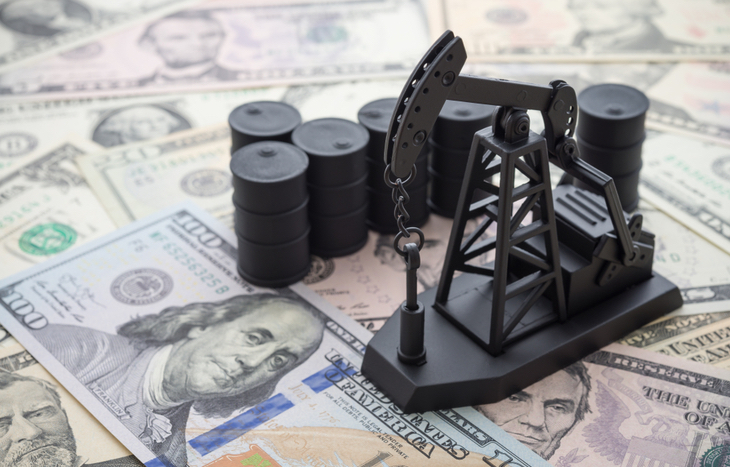5 Oil Stocks to Watch Out for as Prices Surge
Last year was one of the hardest in history for the fossil fuel industry and for oil stocks. The impact of the COVID-19 pandemic wiped out tens of billions of dollars.
As things are beginning to improve, many investors are looking at the oil sector as a possible place to invest.
Oil and Gas Stocks: Why Are People Investing?
Oil stocks have been gaining momentum in the market. U.S. crude oil prices have risen to the highest level since April 2019. The Organization of Petroleum Exporting Countries (OPEC) has continued to cut production despite increasing demand. As a result, oil prices are surging.
Rising prices have given oil companies a solid footing following the economic crash. And prices could rebound further as supply and demand balance out. In the next few years, prices are set to rise by the fastest rate seen since the 1970s.
These oil stocks might be great buying opportunities as they continue to reap the benefits. Higher oil prices should lead to larger capital gains…

5 Oil Stocks to Consider
- Exxon Mobil (NYSE: XOM)
- Chevron (NYSE: CVX)
- Royal Dutch Shell (NYSE: RDS.A)
- ConocoPhillips (NYSE: COP)
- Total (NYSE: TOT)
Exxon Mobil
Exxon Mobil is an integrated supermajor. The company has advantages in the oil industry that are almost impossible to replicate. Exxon Mobil’s stock price is also highly correlated with the price of oil. The stock offers a yield of roughly 5.6% for dividend investors. The company is also on the list of Dividend Aristocrats. This list includes stocks with 25 or more consecutive years of dividend increases.
Exxon Mobil has nearly doubled from its lows in September 2020. Recently, share price surged following the company’s announcement to add two new board directors. Many people have been pushing the company to make changes as the world moves toward cleaner energy.
Exxon Mobil’s rebound allows it to continue exploration, development and new innovation. The company has taken advantage of weak oil prices to invest in lower-cost production. The company plans to spend as much as $35 billion per year through 2025. Management estimates that some of these investments can return 10% with oil as low as $35 a barrel.
Chevron
Chevron entered the pandemic with a goal to keep debt in check and reduce costs. As a result, this top oil stock held up better than most of its competitors in 2020. The company has done a better job of lowering debt than other oil companies. Chevron has grown to be the largest supermajor traded in the U.S. market.
Chevron is trading at 25 times this year’s expected earnings and 19 times 2022’s projected earnings. The company recently released “one of their most investor friendly strategic plans yet,” according to Truist analyst Neal Dingmann.
Chevron will increase production while spending much less than expected. Chevron’s management expects similar growth to its pre-COVID-19 outlook despite a 30% reduction in capital spending. The plan will hold up as long as Brent crude prices are $40 or above, according to Morgan Stanley analyst Devin McDermott. Brent is currently trading at just under $70.
Royal Dutch Shell
Royal Dutch Shell is another top oil stock in the fossil fuel industry. The company took a hard hit in its stock price in 2020, but shares are looking up as the company moves toward clean energy.
Shell, like the other supermajors, is aware of the environmental changes. And it’s starting to adapt. The company announced its goal to become net-zero on carbon by 2050. Shell’s shift toward renewable energy efforts will allow the company to play a major role in the energy industry for a long period.
The company continues to surprise shareholders with its ability to pivot. And investors expect strong months ahead after the company’s announcement. The price could continue to rise, with a strong buy consensus from analysts.
ConocoPhillips
ConocoPhillips is one of the leaders of E&P companies. Its shares have gone up about 70% in the last six months. The company is starting to cash in on higher oil prices. It has spent years lowering supply costs and plans to continue doing so in 2021. Because of this, the company expects to produce cash flows at lower oil prices in the future.
ConocoPhillips revealed it plans to spend $5.5 billion on projects in 2021. The company projects an operating cash flow of $10.5 billion to $10.8 billion at $50 oil per barrel. If oil continues to stay at $60 a barrel, the company projects cash flow to be even higher. So investors in this oil stock might see more share buybacks and higher dividends ahead.
Total
The impact of COVID-19 tanked oil prices. While some industry giants resorted to dividend cuts, Total committed to maintaining its high dividend yield. It can maintain its dividend as long as oil averages around $40 a barrel or higher. The company strives for consistency despite volatility.
In its full-year 2020 earnings report, the company announced efforts to shift to carbon neutrality. The company has taken a unique approach, shying away from greenfield developments. Instead, Total is focusing on acquisitions of proven technologies to go green. The company is buying into projects and companies that can use Total’s scale and free cash flow.
This strategy should allow the company to continue paying its big dividend. Total’s strategy has given investors a safety net and a path toward a cleaner future. With oil prices on the rise, Total is a promising investment.
Risks to Oil Stocks
An investor should always be aware of the risks. General risks apply to every stock, but some industries have specific risks. Here’s a look at some you should be aware of before investing in oil stocks…
Volatility
Volatility can create a good opportunity to profit, but it creates a higher risk of loss as well. The prices of oil companies are volatile due to the supply and demand of the underlying commodities. Price volatility depends on a number of geographic and economic factors. The oil and gas markets tend to be made up of cyclical stocks.
Among the sectors affected by the COVID-19 pandemic, the oil and gas industry had a relatively steep drop, but it has started to rebound. Investors weren’t as bullish on the industry during the pandemic, causing oil prices to take a beating.
Environmental Risks
Oil spills and fire accidents can lead to crashes in stock prices. In 2010, the world watched one of the worst oil spills in the Gulf of Mexico. The “Deepwater Horizon” spill was one of the largest oil spills in history.
Stock prices plunged by more than 55%, and BP investors suffered huge losses. The 4.9-million-gallon spill had a huge impact on marine life and the environment. The company is still facing lawsuits and recovering from the incident, all these years later. The impact on BP’s stock price shows that environmental risks can deeply affect an investment.
The Bottom Line on Oil Stocks
The oil industry isn’t for risk-averse investors. The oil sector is volatile. So it’s important to choose solid companies, ones that can weather the downturns that come with the oil industry. And if you can stomach the volatility and hold long term, you could take home big returns.
To find even more oil stocks and investing opportunities, sign up for Profit Trends. It’s a free e-letter that’s packed with tips and tricks. Whether you’re a beginner or already an experienced investor, there’s something for everyone.
About Aimee Bohn
Aimee Bohn graduated from the College of Business and Economics at Towson University. Her background in marketing research helps her uncover valuable trends. Over the past year, her primary focus has been researching IPOs and other trends.





